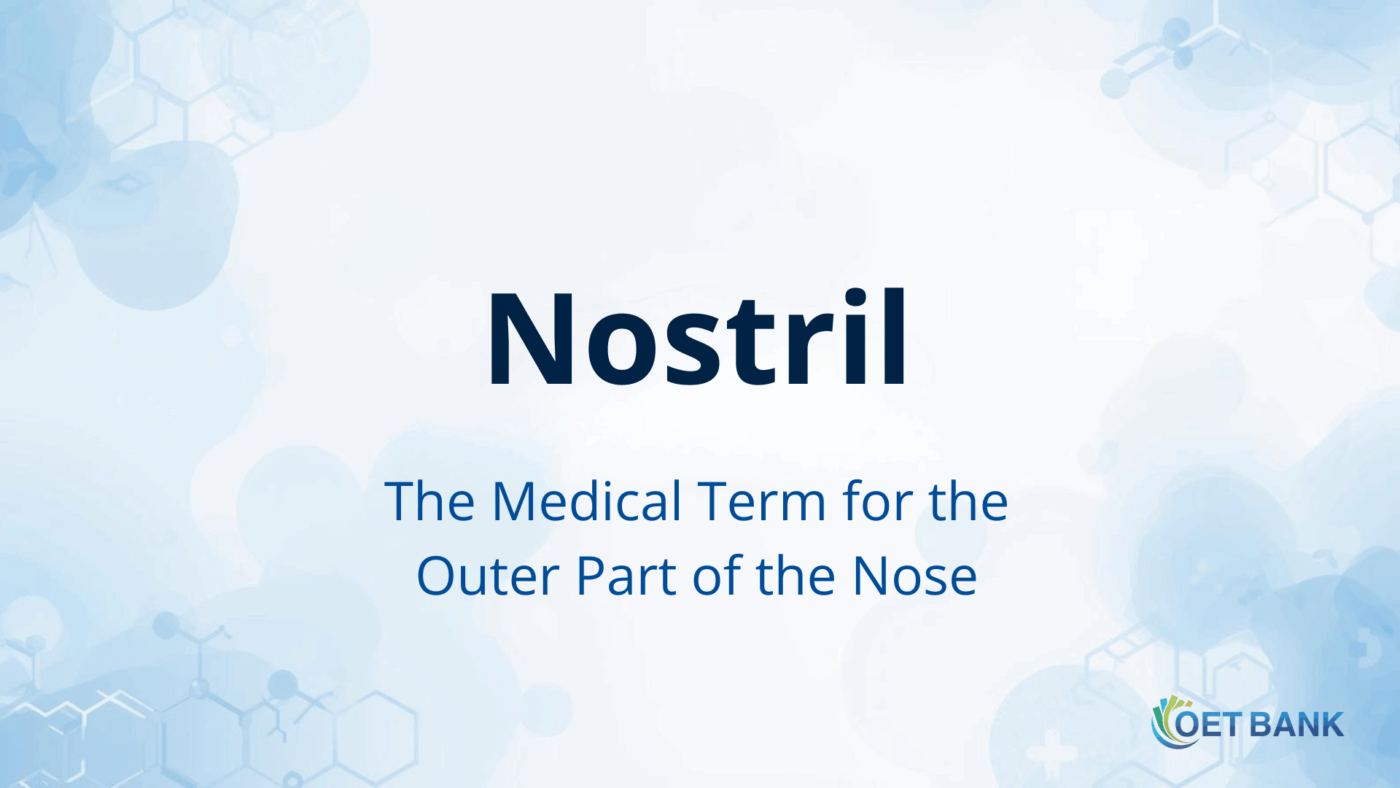OET Vocabulary, Word of the Day
Nostril – Meaning and Usage in Medical English

👁 What Does “Nostril” Mean?
The word nostril refers to one of the two external openings of the nose.
Each nostril allows air to enter and exit the nasal passages. The term comes from the Old English nosu (nose) and thyrel (hole). Together, it literally means “nose hole.”
In clinical anatomy, both nostrils lead into the nasal cavity, separated by the nasal septum — a wall made of cartilage and bone.
Through these passages, air is filtered, warmed, and humidified before it reaches the lungs.
🔍 Clinical Usage
In clinical communication, doctors often mention “nostril” when describing nasal obstruction, bleeding, or examination findings.
For example, during ENT assessment, a physician might note:
“The patient’s right nostril is congested.”
or
“Bleeding observed from the left nostril.”
When patients describe their symptoms, you might hear:
“My right nostril feels blocked,”
which can suggest nasal congestion, allergies, or a deviated septum.
Understanding how to describe such findings precisely helps healthcare professionals communicate effectively — especially in OET Speaking tasks.
🎥 Watch the Short Video
You can also learn this word visually in our short video.
It introduces “nostril,” explains its function, and shows a common clinical example of nasal blockage.
Study with OET BANK
Stop wasting time comparing OET materials.
With OET BANK, you get:
- Premium-quality OET materials, built by professionals
- A focused, efficient study path — no unnecessary content
- A system designed to help you pass OET once — without trial and error
If you want to prepare properly and pass with confidence,
you don’t need to look anywhere else.
Pick your materials and start today — with OET BANK.




